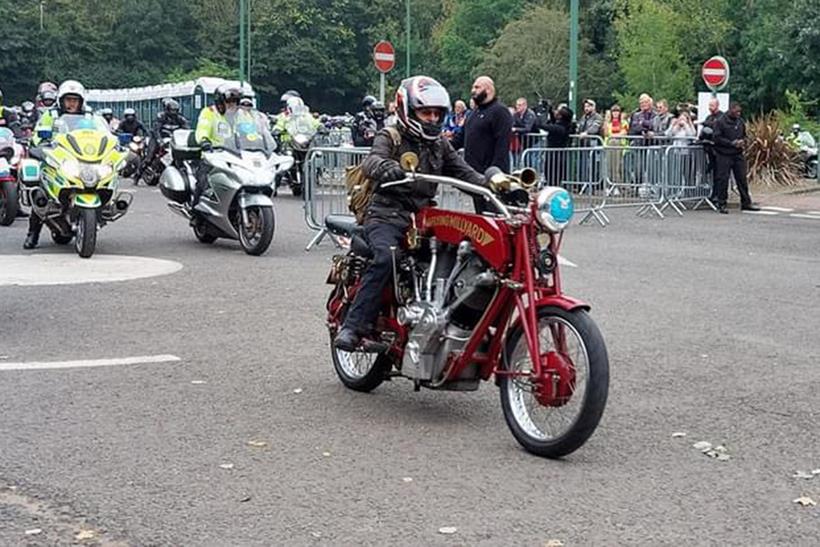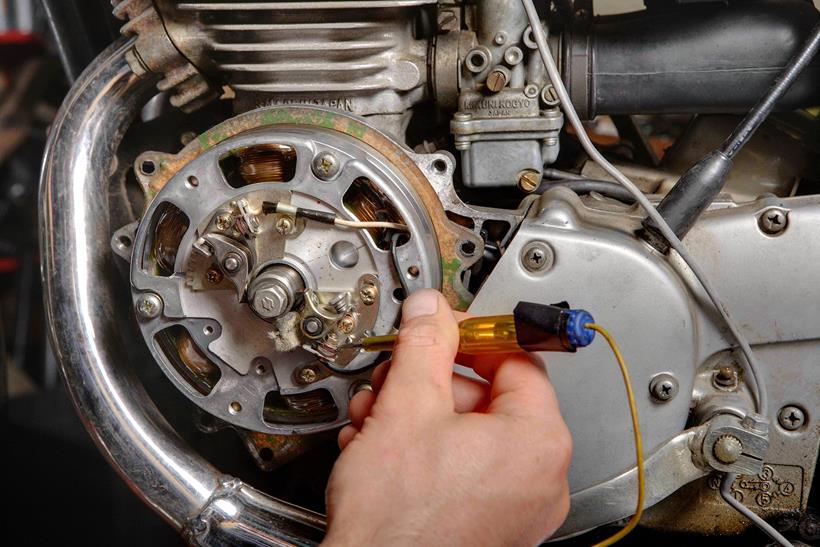Allen Millyard's Norton Nemesis V8 engine fires up plus a busy month for the Flying Millyard

I’ve been doing a lot of riding this month, over 500 miles on my 5000cc Flying Millyard alone. First
I rode it to Shrewsbury for the Bike4Life fest in aid of Midlands Air Ambulance, where I was one of the lead riders alongside Carl Fogarty, James Whitham, Eddie ‘The Beast’ Hall, and Elspeth Beard.
The five of us led 3500 bikes on the rideout from Shrewsbury to Weston Park showground. It was really amazing because they shut the roads, so we had police in front guiding us through red traffic lights and straight down the M54.
People lining the motorway bridges all cheering and clapping, and we’re bibbing our horns at them. Then when you get to the showground, there’s 10,000 people there too, on top of the 3500 bikes. It’s a great event.

Getting there was a bit stressful, though, because I really didn’t want to be late and miss the start of the rideout. But as the FM only holds about three gallons of fuel, doesn’t have a fuel gauge or warning light, and does anywhere between 30mpg and 5mpg depending on how I’ve been riding, it meant that I had to stop for fuel four times on my 160-mile ride there because I couldn’t risk running out.
The following weekend I rode it down to Sammy Miller’s in Hampshire for the Kickback festival. The ride down was in torrential rain and the FM was absolutely plastered in muck by the end, which meant that I spent the whole of the following day cleaning it; polishing the brass, oiling the chains, cleaning the aluminium… putting saddlewax on its leather toolcase!
In the workshop, I’ve had quite a busy – not to mention landmark – week with the Norton Nemesis, because I got to the point where I could fire up the engine on the bench. After I connected the ECU, the sensors and the battery, I simply squirted some fuel into the inlet ports with a squeezy bottle, because I haven’t yet connected up the injectors. Then – vvrrrrm – it fired up on all eight cylinders and some flames even came out of the exhaust, too.
You can see a video of that start-up below
To me it was a really good achievement, and it meant that we could then get the engine into the frame. So I bolted the frame onto the engine while it was on the bench, then my son Sam came down to help me lift it off the bench and onto the floor, after which I could put the forks and the swingarm in. Now it’s up on its wheels I can just connect all the gauges and electronics.
That’s a bit of a mammoth task in itself because the wiring that was on the bike was less than ideal – all those horrible crimp-on car connectors – so all that has to go and be replaced by proper Japanese connectors. I’ve also got twin electric radiator fans, an electric water pump, and all the road-going stuff to wire up too because there was no original wiring for that at all!
The aim if possible is to have it ready for the National Motorcycle Museum Live! event which is at the end of this month (October 26-27) so all being well we’ll take it up there and have the grand start-up live on stage.
I’ve made this bold statement that I’m going to get it running… but it’s a big challenge and there’s still plenty to do. Remember, there’s no manual for this, I’ve got to work everything out for myself, but I’m pleased with how it’s going.
Ask Allen

MCN reader Tim Hughston asks: “I can just about get my head around how you work out the crank angles for your creations, and even how you work out the cam intervals, but what really intrigues me is how you manage to set the ignition timing for the extra cylinders. I can understand the points setting on a classic multi-cylinder, but how do you add the extra sparks on a five- or seven-cylinder engine?”
Answer: “You just reconfigure the points, so if it’s a four-cylinder you’ve got four sets of points at 90 degrees; if it’s a five you got five sets of points at 72 degrees. So I make a new backplate, drill and tap all the holes, fit the points then you’ve got a single-lobe cam that rotates round every 72 degrees and makes the points open and shut, which creates the spark and sparks the piston on a two-stroke.”



